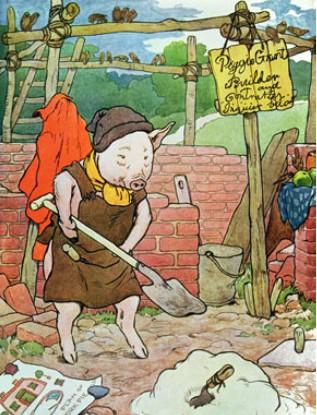
Science and Technology
科技
Materials science
材料科學
Don't slag it off
廢渣別融掉
How to make bricks out of industrial waste
怎樣用工業廢渣制造磚塊
BUILDING houses and offices out of toxic waste sounds like a pretty eccentric idea.
用有毒廢料建造住房和辦公室的點子聽起來真怪。
Yet it may become commonplace if Ana Andres of the University of Cantabria in Spain has her way.
但是如果西班牙坎塔布里亞大學的Ana Andres成功的話,這項技術就會廣泛應用。
For Dr Andres and her colleagues suggest, in Industrial & Engineering Chemistry Research, that the humble brick need not be made of pure clay.
Ana Andres博士和她的同事們在《工業與工程化學研究》中提出,一般的磚不需要全用粘土燒制。
Instead, up to 30% of its weight could be slag—the toxic gunk left over when steel is made.
反而,高達30%的重量可以是礦渣,這是一種在制鋼過程中產生的有毒廢料。
Waelz slag, to give its technical name, is composed mainly of silica but is also undesirably rich in poisonous metals like lead and zinc.
學名是威爾茲的廢渣主要由硅土組成,也不可避免的含有諸如鉛和鋅之類的有毒金屬。
Getting rid of it safely is thus a problem. Getting rid of it usefully might sound like a miracle.
如何安全的去除這些金屬是一個問題。能夠去除聽起來就是個奇跡。
But that is what Dr Andres proposes.
但這正是Andres博士打算解決的。
A series of experiments she has conducted over the past three years suggests this is not only possible but will make bricks cheaper and more environmentally friendly.
再過去的三年中,她所做的一系列實驗表明,安全去除有毒物質不僅可行,還可以降低制磚成本,更加環保。
Her research started after she read of previous work which had shown that many ceramics suffer no loss of integrity when the clay used to make them is mixed with other materials, and that the molecular structure of some ceramics acts to trap atoms of toxic heavy metals.
一些研究表明,在用于燒制的粘土中添加了其他材料后,陶瓷整體的性質沒有減弱,一些陶瓷的分子結構捕捉有毒重的金屬原子,讀到這些后,博士開始了她的研究。
She wondered whether these things might be true of brick clay and Waelz slag, and she began experimenting.
她想知道這些原理對制磚粘土和威爾茲廢料是否同樣適用,她開始實驗。
The answer, she found, was that they are.
發現答案是,同樣適用。
Bricks show no loss of useful mechanical properties even when 20-30% of their content is slag. Nor do they leak.
就算20-30%的是廢料,磚的力學性能也沒有降低。有毒物質也沒有泄露。
To check that, Dr Andres and her team ground their bricks into powder and soaked them in water, shook them in special machines for days at a time, and even tried to dissolve them in nitric acid.
為了驗證這一點,博士和她的科研小組將磚頭打成粉末,浸泡在水里,在特殊裝置里幾天不停地搖晃,甚至在硝酸中溶解粉末。
The pollutants stayed resolutely put.
污染物沒有一絲一毫泄露。
Moreover, adding slag to the clay reduced by a third the amount of carbon dioxide each brick released during its manufacture, because wood pulp is added to clay before it is fired, and less clay means less pulp is needed.
而且,通過在磚頭中增加廢料,可以在制磚的過程中減少三分之一的二氧化碳排放,因為添加在粘土中的木漿沒有經過燃燒,粘土越少,需要的木漿越少。
The cost, too, fell, because slag is free, whereas clay costs money.
成本也有所降低,因為廢料是免費的,只有粘土需要用錢購買。
There is, of course, the problem of customers.
當然,消費者是個問題。
Whether people will be willing to live and work in structures that double as waste dumps is moot.
人們是否愿意住在工作在磚頭含有有毒物質,但面積增加一倍的建筑物中還不得而知。
But for those who want to make an eco-point, what better way could there be than, literally, to build their green credentials?
但是對于那些想做點對生態有益的人,說實話,什么會比建造環保建筑這一綠色證明更好的方式呢?











